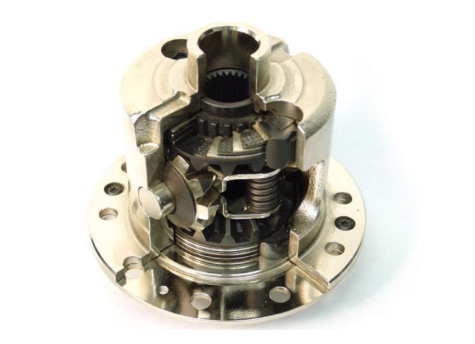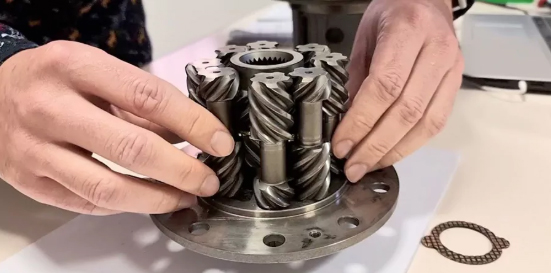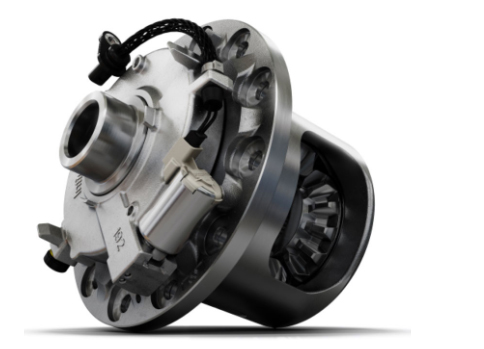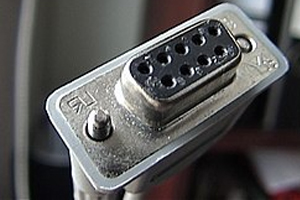Expert Guide on Limited Slip Differentials: How They Work and Uses
Author:admin Date: 2025-11-12 08:43 Views:14
- Introduction
- How Limited Slip Differentials Work
- Benefits of Using a Limited-Slip Differential
- Types of Limited Slip Differentials
- Applications of Limited Slip Differentials
- Limited Slip Differential Maintenance
- Common Problems With Limited-Slip Differentials
- Should You Consider Aftermarket LSD Upgrades?
- Conclusion
- Video: Limited Slip Differential Explained
Introduction
A limited-slip differential (LSD) is a crucial automotive component that enhances a vehicle’s performance, handling, and safety by improving traction in challenging conditions. The LSD works by actively managing the distribution of the engine torque to the drive wheels, sending more power to the wheel with better grip. You should now be able to get out of tricky situations.
LSDs are commonly used in a wide range of vehicles where traction and control are important. Examples include sports cars, off-road trucks/SUVs, and AWD systems.
How Limited Slip Differentials Work
Now that you know what is a limited slip differential, we have to look at how it works.
LSD works by intelligently managing the overall distribution of the engine power with the aim of maximizing traction and improving vehicle control. This is particularly when a wheel loses grip.
Unlike in open differential, which sends most power to the wheel with the least resistance. In LSD, it biases the power to the wheel with the better traction.
There are several components needed by the LSD for it to work. Here are the components to expect:
- Clutch packs: This is what you get with a clutch LSD. In this case, it contains a series of friction plates and steel discs. Whenever a speed difference is detected, the pressure rings compress the clutch packs, generating friction that limits slip.
- Gears are also in LSDs, especially the helical/torsen LSDs. The gears are used in place of clutches. The unique gear angles create internal resistance whenever one wheel tries to spin faster than the other, biasing torque to the wheel with greater resistance or traction.
- Cone-type LSDs work similarly to clutch types but instead use the cone-shaped friction surfaces for a compact, smooth engagement.
- Viscous fluid LSDs come with a sealed housing that is filled with a thick silicone-based fluid and perforated plates. So, when the plates spin at different speeds, the fluid heats up and then thickens. This creates hydraulic resistance, which limits slip.
Benefits of Using a Limited-Slip Differential
Limited slip differentials offer many benefits to the vehicles performance. Here is why people will consider getting a vehicle with a limited slip differential.
- Improved traction on slippery surfaces
This is probably the most important benefit of limited slip differentials. You will need it when driving on uneven or low-friction surfaces such as gravel, mud, ice, and snow. Open differentials send all the engine power to the wheel with the least grip, which means the wheel keeps spinning uselessly. However, LSD biases torque to the wheel with traction, allowing the vehicle to maintain momentum and avoid getting stuck.
- Better acceleration out of corners
A limited-slip differential can also be good for performance driving. This is especially true when accelerating out of corners. Corning causes the vehicle’s weight to shift. In this case, the inside drive wheel is unloaded, thus reducing its traction. An LSD is necessary to transfer torque to the loaded outside wheel, so you can accelerate harder and earlier out of a corner. This improves lap times and performance on the track.
- Enhanced stability in high-performance driving
High-performance driving requires consistent traction at both drive wheels. LSD is good at making this possible as it makes handling more predictable and stable.
Whenever you accelerate aggressively or navigate rapid changes, the LSD minimizes sudden power disparities between the wheels. This reduces the risk of having a “spin-out” or a snap oversteer.
- Improved off-road capability
Off-road conditions often involve situations where you have one wheel in the air momentarily. An LSD ensures the power is delivered to the wheels in contact with the ground. This provides the necessary traction needed to go over obstacles, climb hills, or navigate challenging terrain more effectively.
- Reduced wheel spin and loss of power
The fundamental goal of the LSD is to prevent cases of wheel spin. This is done by distributing torque more efficiently. It ensures the engine power is transferred into forward motion rather than being wasted on tire smoke or heat. This largely improves the overall efficiency of power delivery from the engine to the road surface.
Types of Limited Slip Differentials
Expect to come across multiple types of limited-slip differentials. They are all designed to work differently. Below, we look at the common types so that you can know which is the best for your application.
Clutch-Type LSD

This is a mechanical LSD with internal friction plates to limit cases of wheel slip. The friction and steel plates or clutch packs are placed between the side gears and the differential housing. Whenever there is a difference in wheel speed, the internal pressure rings force the clutch packs together. Friction is vital for partially locking the axles, thus sending more torque to the wheel with grip.
It is best used for track tracing, drifting, off-road vehicles, and performance street cars.
Helical/Torsen LSD

Torsen means torque-sensing differentials. In place of clutches, the Torsen LSDs use worm gears and spur gears. Whenever a wheel starts to slip, the unique gear design generates thrust and internal friction. This makes them bind and resist the speed difference. Such a mechanical action redirects the torque to the wheel with more traction.
Common applications for such an LSD include sports coupes, high-performance street cars, and some AWD systems offering a good balance of performance and daily driving comfort.
Viscous LSD

These are simple, compact, but still reliable LSDs. They rely on fluid dynamics to operate.
In this case, the differential is a sealed unit with alternating inner and outer perforated plates. These plates are submerged in a high-viscosity silicone fluid. Whenever there is a speed difference, the plates spin at different rates, shearing the fluid. The motion generates heat, which causes the fluid to thicken rapidly, creating the resistance needed to lock the plates together and transfer the torque temporarily.
Electronic LSD

Electronic LSD or e-LSDs have computer controls for actively managing power distribution. They can often utilize cluck packs similar to the mechanical LSDs.
The e-LSDs use sensors and electronic controls to monitor the driving conditions in real-time. They are also integrated into ABS, traction control, and ESC systems. A dedicated computer or powertrain control module uses sensor inputs to monitor them and proactively signal the actuator to apply the clutch pack and lock the differential to the optimal amount.
Applications of Limited Slip Differentials
You will come across limited slip differences in many applications. Such include:
- Sports car/performance driving
- Drift cars
- Off-road vehicles
- Daily driving
- Towing or heavy-duty vehicles
Limited Slip Differential Maintenance
It is important to maintain the limited-slip rear differential to ensure longevity and effective operation of the LSD. There are a couple of things you should do in terms of maintenance. That is what we look into below.
How Often to Change LSD Oil
The service interval for differential oil largely depends on the differential type, manufacturer recommendations, and vehicle usage.
Clutch-type LSDs require more frequent oil changes. For normal use, change the oil every 15,000 to 30,000 miles. This is vital to keep the clutch packs lubricated and also functioning correctly.
In the case of heavy tracks or off-road use, the fluid should be changed more often. It can be done every few race weekends or after a major off-road trip, since heat and friction rapidly degrade the fluid.
Helical/Torsen LSD are very durable and generate less heat compared to clutch types. As expected, the fluid should last longer. We recommend following the manufacturer’s recommendations of changing the oil from 50,0000 to 100,000 miles.
Viscous LSDs have the fluid sealed in the unit and cannot be changed or serviced. The entire unit needs to be replaced if it fails.
Electronic LSDs are similar to helical units. Since the clutches are controlled using actuators, fluid breakdown is not a primary concern. Follow the manufacturer’s recommendations.
Types of Differential Oil For Each LSD Type
Using the correct fluid is vital for the performance of the differentials.
Clutch-type LSDs require gear oil containing friction-modifier additives. The work of the additives is to allow the clutch packs to slip slightly during normal turning without necessarily binding or chattering. This is vital to enable them to engage under load.
Helical LSDs need high-quality non-frictional modified gear oil. They simply rely on the sheer forces of gears to operate. Also, they do not use clutch packs.
Viscous LSDs do not need an oil service as they are sealed.
Electronic LSDs use specific synthetic gear oils as recommended by the manufacturer. They often come with unique additive packages designed to work with the electronic actuator system.
How Long Each LSD Type Lasts
Multiple things may affect how long each LSD lasts. Below is what you can expect with the different types of LSDs.
- Helical/Torsen is known for extreme longevity. This means that they can last the lifetime of the vehicle unless you abuse it or run dry without oil.
- The viscous sealed units can wear out after 60,000 to 100,000 miles of normal use. This is because the fluid at this point permanently degrades.
- The clutch-type LSD can go more than 80,000 miles before there is a need for a rebuild. For a track or drift car, a rebuild might be needed every 10,000 to 20,000 miles.
- Electronic LSDs have durable mechanical components, but sometimes the electronic actuators can fail. The lifespan is generally long and is aligned with the overall vehicle lifespan. Replacing the individual components can be expensive to replace.
Common Problems With Limited-Slip Differentials
Limited slip differentials are vital to enhance vehicle performance. However, you may experience several problems with these LSDs. Here is what to expect.
Clutch Wear in Clutch-Type LSDs
The friction plates in the clutch-type LSDs are designed to be strong, but they can wear over time. It is similar to a standard clutch found in a manual transmission.
You will notice a lack of traction improvement, one-wheel spin during acceleration, and potential chattering noises.
It requires periodic rebuilding of the differentials with new clutch packs and plates.
Viscous Fluid Degradation
Viscous LSDs rely on having precise properties of the sealed silicone fluid to work properly. The challenge is that the high heat generated during prolonged use can permanently degrade and thin the silicone fluid. This makes the unit lose its ability to transfer torque effectively.
The differential becomes ineffective and now works as an open differential, as the symptoms. Unfortunately, the viscous unit cannot be serviced. The solution is to replace the whole unit if it fails.
Gear Failure in Helical/Torsen LSDs
Helical LSDs are highly durable, but a catastrophic failure can happen under extreme stress or even poor maintenance.
It is rare to find this type of LSD failing, but if you do not service it in time, then you can end up with issues. Expect to hear loud grinding or banging noises, complete loss of drive to the wheels, and differential seizing.
The solution required is to replace the entire internal gear assembly or sometimes the full differential unit.
Electronic Sensor Issues in e-LSDs
The electronic LSDs rely on complex computer systems to operate the mechanical components. So, failure can occur in different sensors such as wheel speed, yaw rate, or steering angle. The actuator that controls the clutch pack engagement.
Watch out for error lights on the dashboard to give you an idea of issues with the LSD. There can also be a sudden, erratic behavior during cornering or a complete lack of limited-slip functionality.
The solution is to get the vehicle to a specific dealership or garage with the right scan tools for identifying the issues. Repairs might involve replacing the faulty sensor or actuator components.
Contamination or Low Differential Oil
Having adequate, clean fluid is vital for the functioning and cooling of the differential types. A leak can cause a low fluid level, which leads to overheating and gear/bearing failure. Water contamination is not common, which makes the oil turn into an abrasive sludge, leading to accelerated wear, sometimes failure.
Whining or howling noise is a common symptom of low differential oil. You may also find metal shavings in the fluid once you inspect it.
Address the leak, flush the LSD system, and refill with the correct clean gear oil. A full rebuild might be necessary in case damage has occurred.
Should You Consider Aftermarket LSD Upgrades?
Upgrading your LSD to an aftermarket one seems like a good idea. However, is that something you should do? Here is why you should consider upgrading your LSD to an aftermarket one.
- Superior durability is expected with the aftermarket LSD. They are often built using stronger materials with more robust designs compared to OEM parts.
- Tunability offered by the aftermarket LSD offers the ability to set specific lock engagement characteristics, such as 1-way, 1.5-way, or 2-way, depending on the use case.
- Enhanced performance is also possible with the aftermarket LSDs. You will notice that such LSDs can put down more power efficiently. This leads to faster acceleration, better off-road capability, and better lap times.
Some popular aftermarket slip differential brands include Quaife, OS Giken, Eaton, and Torsen.
Conclusion
A limited-slip differential is a vital piece of automotive technology. It offers a crucial balance between the smooth comfort of open differential and the robust traction of using full lockers. It is able to intelligently manage the distribution of engine torque and send the power to the wheel with the most grip. LSDs are designed to enhance a vehicle’s performance, safety of driving across diverse conditions, and stability.
Video: Limited Slip Differential Explained
Please send RFQ , we will respond immediately.
Frequently Asked Questions
Which LSD types should you get for daily driving?
For daily driving, we recommend Helical and Viscous LSD as they operate smoothly, require minimal maintenance, and also provide reliable traction without necessarily having an aggressive locking behavior.
Which LSD should you pick for drifting?
Drifters generally prefer clutch-type LSDs since they offer predictable locking behavior, strong lockup under throttle, and also have the ability to maintain controlled oversteer in corners.
Can you install an LSD on any car?
Most vehicles can be upgraded to have an LSD, but compatibility is important to keep in mind. Consider the differential housing type, gear ratios, drive layout, and axle size.


